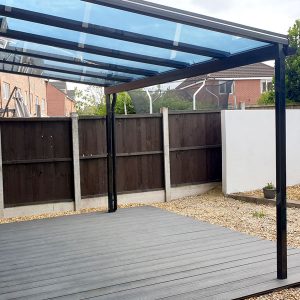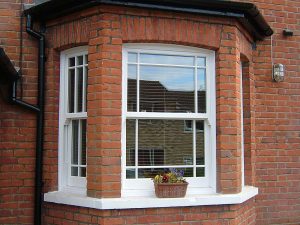Condensation on windows can be a common issue, particularly in colder months. It can lead to mould growth, damage to window frames, and reduced indoor air quality. Here are effective strategies to reduce or eliminate window condensation.
1. Understand the Cause
Condensation occurs when warm, moist air comes into contact with a cooler surface, like your windows. This is similar to how a cold drink sweats on a hot day. Understanding this process is the first step in addressing the issue.
2. Improve Ventilation
Proper ventilation helps reduce indoor humidity levels. As a result, it effectively reduces condensation.
- Use Exhaust Fans: Ensure that exhaust fans in bathrooms and kitchens are used during and after activities that produce moisture, such as cooking and showering.
- Open Windows: Regularly opening windows, even for a short period, can significantly help ventilate your home and reduce humidity. Additionally, this practice promotes better air circulation and prevents the buildup of moisture.
- Install Ventilation Systems: Consider installing a whole-house ventilation system to continuously exchange stale indoor air with fresh outdoor air. This not only ensures better air quality but also reduces humidity levels effectively.
3. Control Indoor Humidity
Lowering indoor humidity levels can significantly reduce window condensation.
- Use Dehumidifiers: Dehumidifiers are effective at removing excess moisture from the air, particularly in areas prone to high humidity.
- Monitor Humidity Levels: Use a hygrometer to keep an eye on indoor humidity levels, aiming to keep them below 60%.
4. Improve Insulation and Window Efficiency
Better insulation and efficient windows help maintain a consistent indoor temperature, thereby reducing the likelihood of condensation.
- Upgrade to Double or Triple Glazing: Double or triple-glazed windows have better insulation properties, helping to keep the interior glass surface warmer.
- Use Window Insulation Film: Applying window insulation film can add an extra layer of protection, reducing heat loss and surface condensation.
- Seal Gaps and Cracks: Ensure that all gaps and cracks around windows are sealed to prevent cold air from seeping in.
5. Use Window Treatments Wisely
Window treatments can play a significant role in managing condensation. Specifically, they help insulate windows, which reduces temperature differences that lead to moisture buildup.
- Open Blinds and Curtains: Keep blinds and curtains open during the day to allow warm air to circulate against the window glass.
- Use Moisture-Absorbing Products: Products like silica gel can be placed on window sills to absorb excess moisture from the air.
6. Manage Indoor Plants
Plants release moisture into the air, which can contribute to indoor humidity. Consequently, this increased humidity can potentially increase the likelihood of condensation on windows.
- Reduce the Number of Plants: If you have a lot of indoor plants, consider reducing their number or moving them to a less humid area.
- Use Plant Trays: Place plants on trays with pebbles to catch excess water and reduce humidity around windows.
7. Heat Your Home Evenly
Even heating throughout your home can prevent cold spots where condensation is more likely to form. Consequently, this helps in maintaining consistent indoor comfort.
- Use Central Heating: Ensure your heating system is functioning efficiently. Consequently, it maintains a consistent temperature throughout your home.
- Use Space Heaters Wisely: If you use space heaters, make sure they are placed in areas where condensation is an issue to keep those spaces warm.
Conclusion
Stopping condensation on windows involves a combination of improving ventilation, controlling indoor humidity, and enhancing window insulation. Therefore, by understanding the causes and taking proactive steps, you can keep your windows clear and your home environment healthy and comfortable.












